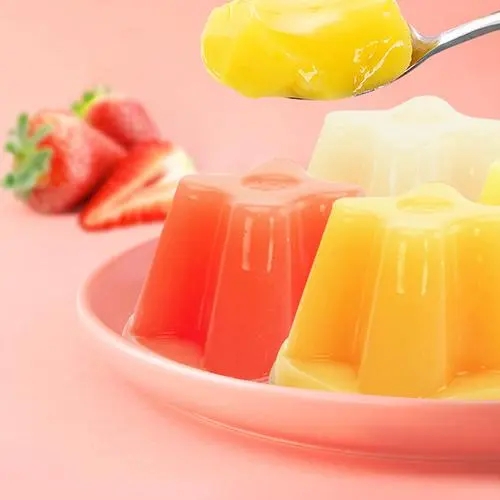Export Grade Phospholipid Supplier
Time:2024-10-30
In jelly production, phospholipids can serve as food additives that replace some traditional additives to improve the texture, taste, and stability of jelly. Here are some additives that phospholipids may substitute, along with their roles in jelly production:
1. Thickeners
·Traditional Thickeners: Such as carrageenan and xanthan gum, which are primarily used to increase the viscosity and stability of jelly.
·Phospholipid Substitution: Phospholipids also possess excellent emulsifying and stabilizing properties, helping jelly form stable emulsions and preventing ingredient separation. They can enhance the viscosity and smoothness of jelly, thus replacing some functions of traditional thickeners.
2. Emulsifiers
·Traditional Emulsifiers: Such as mono- and diglycerides and sucrose esters, which are used to improve the emulsification of food, allowing water and oil to mix evenly.
·Phospholipid Substitution: Phospholipids themselves are excellent emulsifiers that can mix water and oil to create uniform emulsions. In jelly production, phospholipids can replace some traditional emulsifiers, improving the texture and taste of the jelly.
3. Stabilizers
·Traditional Stabilizers: Such as gelatin and pectin, which are primarily used to stabilize the structure and form of food, preventing deformation or spoilage during storage and transport.
·Phospholipid Substitution: Phospholipids can stabilize pulp or juice particles in syrups, jams, and jellies, preventing them from sinking or separating. Through this stabilizing effect, phospholipids can replace some traditional stabilizers, ensuring that jelly has uniform distribution and an appealing appearance.
4. Other Additives
In addition to the above three categories of additives, phospholipids may also substitute some additives used to enhance the taste, color, and aroma of jelly, such as:
·Sweeteners: Phospholipids can be used in conjunction with sweeteners to enhance the sweet flavor of jelly. Although phospholipids themselves are not sweet, they can improve the texture and mouthfeel of food, making sweetness more uniform and long-lasting.
·Colorants: Phospholipids can provide a certain gloss and appearance, making the jelly look more enticing. While they cannot completely replace colorants, they can serve as auxiliary additives to enhance the visual appeal of jelly.
·Flavorings: Phospholipids can be combined with flavorings to enhance the aroma and flavor of jelly. By improving the texture and mouthfeel of the product, they can help distribute the flavoring more evenly throughout the jelly, thus improving its overall sensory quality.
While phospholipids can replace some traditional additives in jelly production, adjustments and optimizations based on the specific formulation and production processes of the jelly are necessary in practical applications. Their usage must also comply with relevant regulations and standards to ensure product safety and legality.


 CN
CN





